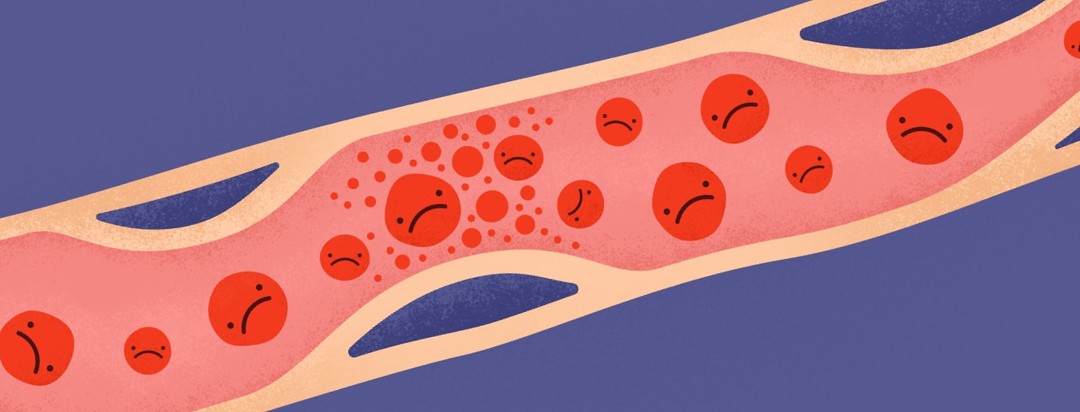Bladder Cancer and Blood Clots (Thrombosis)
Bladder cancer develops when cells inside the bladder, often in the lining, start growing out of control. One of the most common early signs of bladder cancer is blood in the urine (hematuria).
People with bladder cancer also have high rates of blood clots (thrombosis). These blood clots may be caused by the cancer itself or its treatments.1,2
Blood clots are a common problem in people with bladder cancer. The location of a blood clot determines what it is called:2,3
- Deep vein thrombosis (DVT) means a blood clot formed in a vein deep in an arm or leg.
- Stroke means a blood clot lodged in the brain.
- Arterial thrombosis means a blood clot is blocking blood flowing into the heart.
- Pulmonary embolism means a blood clot lodged in the lungs.
- Venous thromboembolism refers to both DVTs and pulmonary embolism.
Bladder cancer basics
The bladder is a hollow, flexible organ that is part of the body’s natural filtering system. This system filters waste products from the blood and makes urine. The bladder holds the urine until it is released through the urethra.1
In 2022, there were 81,180 new cases of bladder cancer. It occurs mainly in people aged 55 and older. More men than women get bladder cancer.4
Between 2 and 5 out of every 100 people with bladder cancer will develop blood clots. This is a much higher rate than healthy people or even people with other forms of cancer, such as breast or prostate cancer. Complications from blood clots are the second leading cause of death in cancer patients.2,5
Blood clots and bladder cancer
Research shows that clotting is a common and dangerous symptom of bladder cancer. Blood clots may form both because of the disease and as a side effect of treatment. This risk is highest in the months after diagnosis and increases as the cancer becomes more advanced.2
There are several reasons why bladder cancer and its treatment increase the risk of clots:2
- Cancer cells activate the body's clotting system.
- Central catheters or ports used to deliver chemotherapy increase the risk of developing DVT.
- Some types of chemotherapy are linked to an increase in blood clots.
- Some drugs used to manage side effects (like weight loss, anemia, and vomiting) are linked to higher rates of clots.
- Bed rest, especially after surgery, raises a person's risk for clots.
Symptoms of blood clots
The most common signs of a blood clot include:3,6
- Pain in 1 leg, usually in the calf or inner thigh
- Swelling, warmth, or redness in a leg or arm
- Pain or tenderness not caused by an injury
- Chest pain, especially with a deep breath or cough
- Problems breathing
- Numbness or weakness on 1 side of the body
- Sudden changes in mental state
- Coughing up blood
- Fast or irregular heartbeat
If you have any of these symptoms, see your doctor right away. Blood clots can be dangerous and even life-threatening. Quick treatment can limit the damage they cause.3,6
Preventing blood clots
Perhaps the best way to protect yourself is to know your risk and educate yourself about the signs of a blood clot. You can also take other steps to reduce your risk of developing blood clots during cancer treatment. These include:3,6
- Let your doctor know if you or your family have a history of blood clots.
- Avoid sitting too long, especially with your legs crossed.
- Avoid long periods of bed rest.
- Stop smoking if you smoke.
- Lose weight if your doctor recommends it.
If your doctor thinks you are at risk for blood clots, they may prescribe drugs to prevent clotting. These drugs may be given during and after surgery when some people have the highest risk. However, blood thinners can be tricky to prescribe since bleeding is another common cancer symptom.2
Your doctor will probably order blood tests to decide if drugs to prevent blood clots are a good choice for you.2
Walking may also be prescribed to prevent clots. Studies have found that being inactive for 3 days increases the risk of clots.2,7

Join the conversation